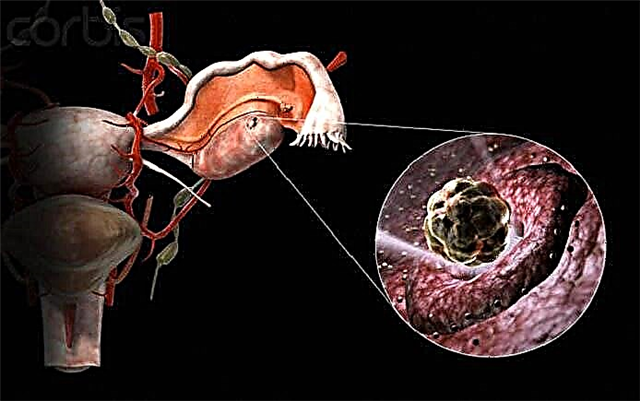
Diuretic drugs are used in women in a position in rare cases, when there is no way to do without it. One of these drugs is Furosemide. It is used during pregnancy only under the supervision of a gynecologist. Such a remedy has a pronounced diuretic effect. However, it cannot be called a safe medication, therefore, in most cases, doctors prefer to avoid the use of "Furosemide" at any stage of pregnancy.
Features of the drug
"Furosemide" is presented in pharmacies in the form of tablets and solution for injection. This product is available from various pharmaceutical companies. The tablets are usually round and creamy white in color. They are sold in blisters or plastic jars of 10, 20, 50 or more.

The main ingredient of the drug is also called furosemide. Its dosage in each tablet is 40 mg.
Auxiliaries vary from manufacturer to manufacturer, but usually include lactose, cellulose, magnesium stearate, starch and similar compounds. Tableted "Furosemide" is sold by prescription and stored at a temperature not exceeding +25 degrees, and its shelf life is often 2 years.
The injectable form of the drug is intended for injections into a vein or muscle tissue. This "Furosemide" is produced in 2 ml ampoules, which are packed in boxes of 5 or 10 pieces. The action of the solution, like the tablets, is due to furosemide, the amount of which in 1 ml is 10 mg. This medicine is also dispensed in pharmacies only with a prescription from a doctor, and its shelf life is 2 years.

Operating principle
The active substance "Furosemide" acts on a part of the nephron, which is called the loop of Henle, therefore this diuretic belongs to the loop. Under its influence, the reabsorption of sodium and chlorine decreases, which contributes to the enhanced excretion of such ions in the urine. At the same time, they "take" water with them, due to which the urine output increases, and the edema decreases. At the same time, under the influence of "Furosemide", potassium, magnesium and calcium are excreted.
Besides, the drug has the ability to dilate large veins and lower blood pressure, which is used in the treatment of heart failure. The diuretic effect of the tablet form is noted 20-30 minutes after administration, the injection - 3-4 minutes after intravenous infusion. Elimination of the drug occurs mainly in the urine.

Is it allowed for expectant mothers?
As already mentioned, the use of "Furosemide" during the period of childbearing has many limitations. In most cases, they try not to prescribe this drug to pregnant women, especially in the early stages. If there are strict indications, then "Furosemide" can be prescribed by a doctor for a short time and only if the risks to the fetus are lower than the expected improvements in the mother's condition.
The active component of the drug is able to overcome the placental barrier and can cause negative consequences, therefore, the use of "Furosemide" during pregnancy is allowed for vital signs. If the expectant mother is nevertheless prescribed such a diuretic, it is important to simultaneously closely monitor the development and growth of the baby in the womb. If any warning signs appear, treatment with Furosemide should be abandoned.

When is it prescribed?
First of all, it is important to note that when edema or other alarming symptoms appear, self-medication while waiting for the baby is unacceptable. For quick elimination of ailments you should consult a doctor who observes a woman during pregnancy, and then take the tests prescribed by a specialist. And only after that, you can take the drugs that the doctor prescribes without violating his instructions.
The main reason for the use of "Furosemide" is edema of various origins. The drug is used for pathologies of the heart, liver or kidneys, which have caused serious violations of the functions of these organs.
The medication is indicated in the case of cerebral edema, cardiac asthma or pulmonary edema, as well as in severe hypertension. During pregnancy, "Furosemide" is often prescribed for eclampsia - a severe form of late toxicosis that develops in the third trimester.
Contraindications
"Furosemide" not used for glomerulonephritis and acute renal impairment, if urine is not excreted at all. The drug is contraindicated in any obstruction or stenosis in the urinary tract, as well as in severe liver disease, pancreatitis, electrolyte and water imbalance, hypersensitivity to furosemide and many other pathological conditions specified in the annotation to tablets and injection solution.

Side effects
Due to the use of "Furosemide", various negative effects may develop, for example, muscle cramps, drowsiness, low blood pressure, dry mouth, headache, urticaria, severe thirst, and so on. In case of any adverse reaction to the drug, a doctor's consultation is needed to cancel it and select another treatment.
Instructions for use
The scheme of using "Furosemide" is determined individually. The doctor decides which dosage form is needed in a particular case, which dose is suitable for the expectant mother and how long she should receive treatment. The use of such a diuretic is largely influenced by the clinical situation and the response to therapy.
You usually need to drink pills in the morning before breakfast... The initial dose of Furosemide is often from 20 mg (half a tablet) to 80 mg (two tablets). If taking such a dosage did not have the desired effect, the doctor will carefully increase the amount of the active substance, and when the swelling goes away, the dosage will need to be gradually reduced every 1-2 days.

If injections are prescribed, then the solution is injected once a day (less often - twice a day) at a dose of 20 mg (one ampoule) to 40 mg (two ampoules). Injections, depending on the disease and the patient's condition, can be either intravenous jet or intramuscular.
Such treatment is necessarily carried out in a hospital setting.
Analogs
Other diuretics can replace "Furosemide", however, there are serious restrictions on taking most diuretics during pregnancy, so such drugs are used as a last resort. If the situation is not critical, the doctor selects for the expectant mother a more gentle remedy that stimulates the excretion of urine.
- "Kanefron N"... This medicine is represented by a yellow-brown solution and orange pills. It contains phytocomponents (rosemary, lovage, yarrow) that have a diuretic effect. The drug is allowed for expectant mothers at any time.
- Brusniver. Such a medicinal collection, in addition to lingonberry leaves, includes a string, rose hips and St. John's wort. Raw materials are brewed for the preparation of infusions and decoctions. The ready-made drink is in demand for the prevention of edema in late pregnancy, as well as for cystitis and many kidney diseases.
- Orthosiphon staminate leaves... A drink made from such plant materials is called kidney tea, since it has a moderate diuretic property, and also relieves spasms and removes salts from the kidneys. Attitude can be applied in pregnant women as prescribed by a doctor.
- "Hofitol". Such tablets are more often prescribed to improve the outflow of bile and improve the condition of liver cells, but they also have a diuretic effect, therefore they can be used for kidney problems. The drug is approved during pregnancy and is also available as a solution for oral administration and injections.





